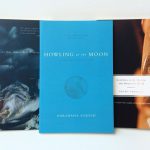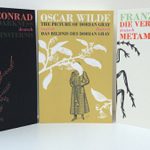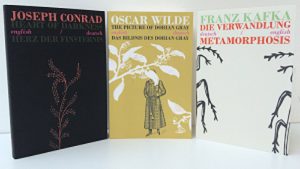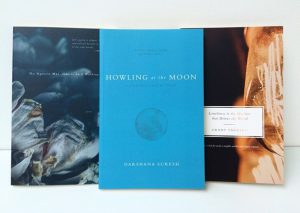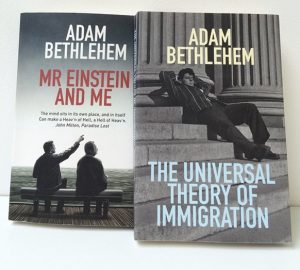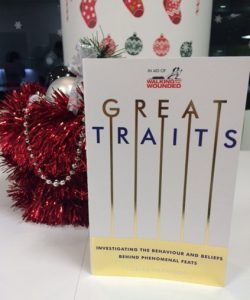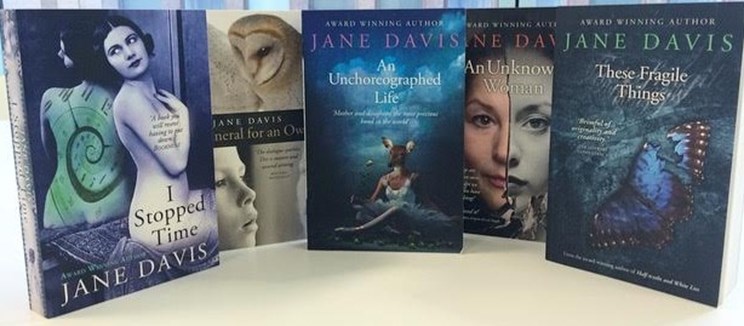
Jane Davis is the author of seven books as well as a collaborative multi-book box set with other indie authors. She won the Daily Mail First Novel Award in 2008 and after a traditional publishing deal, she began to investigate Indie Publishing. In May 2016, she won Writing Magazine’s Self-Published Book of the Year Award for her novel An Unknown Woman. We asked Jane a few questions about her indie publishing journey so far…
What was behind your decision to independently publish your books?
If I’m honest, self-publishing wasn’t my first choice. Perhaps now, it would be different.
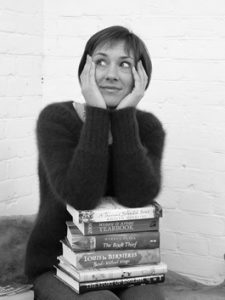 In November 2012, I decided I owed it to myself to investigate something I had been resisting. I attended the Writers’ & Artists’ Self Publishing in a Digital Age conference. It was a revelation! There, established authors who had been dropped by their publishers were rubbing shoulders with first-time writers who had released their e-book priced at 99p and had sold 100,000 copies within a year. It was a publishing revolution. So was I in or was I out?
In November 2012, I decided I owed it to myself to investigate something I had been resisting. I attended the Writers’ & Artists’ Self Publishing in a Digital Age conference. It was a revelation! There, established authors who had been dropped by their publishers were rubbing shoulders with first-time writers who had released their e-book priced at 99p and had sold 100,000 copies within a year. It was a publishing revolution. So was I in or was I out?
Deciding I was in, I released I Stopped Time and These Fragile Things on Christmas Day, using Amazon KDP.
What is your process for coming up with titles?
It’s interesting you should ask that question today! I’m trying to settle on a title for my forthcoming release. The book tells the story of a radical poet and political activist, the men she loves and the causes she supports. It went under the working title, Less Venom, More Sorrow, which comes from a biography of the poet, Edith Sitwell. It was advice given to her when she was a young poet, learning her craft. She makes an appearance in my novel, passing on the same advice to my main character, Lucy Furlong. My feeling is that a title should always come to mean something to readers by the end of the book, and so I build text around mine. The difficulty is that the original title simply isn’t commercial. I put a list of alternative titles to my beta readers and whittled my shortlist down to three, then on the advice of a PR agent, I plumped for a change to, My Counterfeit Self. Now my copy editor tells me he’s in love with the original title. (Over half of my beta readers agreed.) So I have a dilemma.
When choosing a title, I start with research. Titles aren’t subject to copyright and they do get recycled – or several people simultaneously have the same bright idea. I find the process of changing title at a late stage very difficult. A title becomes part of a novel’s identity.
I Stopped Time started life as A Very Great Age, because I set out to pay tribute to my grandmother who lived to the grand age of 99. However, I made the change while carrying out research. The concept of stopping time comes from the notebooks of my favourite photographers, Lartique.
These Fragile Things was always These Fragile Things. I would have liked to use Still Small Voice but that was taken, so instead of a hymn I turned to a Depeche Mode lyric. Neil Gaiman has since used Fragile Things for a short story collection. I’m not complaining. Coming up in the same search as a famous author does no harm at all.
An Unchoreographed Life also came from research. It was the phrase Margot Fonteyne used to describe her chaotic life off stage. To me, it was perfect for my story of an ex-ballerina who turns to prostitution when she became a single mother. I still use the nickname, Pelican Park, which is a reference to St James’s Park, where many main scenes take place.
The final stage in the process is, I suppose, how well the title works with a cover design concept.
Why did you decide to try short run printing, and how did your experience with POD compare?
It was a question of being dissatisfied with both price and quality of POD. I had been making a loss of £5.00 on every paperback I sold, a situation that obviously couldn’t continue. In the short term, moving to short run printing cost me approximately the same as POD, because of the reformatting work that was required (some of which I admit was not essential, but before launching new editions I wanted to ensure they were very best they could be.) I will hopefully be at break-even stage with the second print run.
The second issue was one of quality control. I received some botched orders of POD editions, even when I only placed a single order and the problem was very obvious. The last straw was when the proof copy of An Unknown Woman arrived with part of its title cut off the front cover. This could easily have been sent out to a reader. I felt that they deserved better.
Moving to short print runs, at first, I didn’t appreciate the difference between dealing with a printer rather than a publisher. Working with Clays, it has helped enormously to have a ‘real person’ to deal with. Rebecca Souster is extremely knowledgeable and guided me through the process. (ISBN numbers, bar codes, etc.) For approximately half the price, the product is far superior and the quality is consistent.
How do you go about getting your books stocked in bookshops?
There’s no magic formula. I walk in and with samples of my books and a book information sheet and ask. I am looking for long-term relationships. The cost of travel, parking and other incidentals and leaving samples (yes, many booksellers will want to read the book before agreeing to buy) wipes out any profit unless the bookshop restocks when the copies have sold. But there are other advantages, such as the bookshops willingness to host book signing events and book launches.
If distance means I can’t visit the shop in person, I phone to find out who is responsible for buying books and send a personal email. From this point of view, when I can’t deliver, having distribution via Gardners (which Clays facilitate) is enormously helpful. (Clays also helped me set up a trading relationship with Waterstones.)
When you ask about the difference between POD and short print runs, there’s absolutely no doubt that my life has been easier since I produced my ‘book shop editions’. Having a beautiful product shows that you mean business.
You have been a prominent ALLi member for the past couple of years. How do you think this has helped you throughout your indie publishing journey?
I had already begun my indie publishing journey by the time I stumbled across ALLi, but once I discovered them, it soon became obvious that this was a club I needed to belong to.
On a day-to-day basis, ALLi’s Facebook Forum is both a sanity check and an invaluable resource. Indie publishers either have to expand their skillsets, and so are in a position to provide advice to other members, or know exactly who to go to. That knowledge alone is gold dust. It might be a technical problem I’m having, or I might be asking for a reference for a new copy editor. Often, it’s not a question of being afraid to invest, but wanting to invest wisely.
I’ve joined forces with other ALLi members. In 2015 I collaborated with six other members to produce a multi-author box-set called Women Writing Women; Outside the Box. I learned such a lot from being part of this amazing group of writers. Talking of skillsets! Within a small group, we had specialists in cover design, website design, interior layout, video production, PR… the list goes on. And promotion in a group certainly gives you more courage.
How would you describe the indie publishing community?
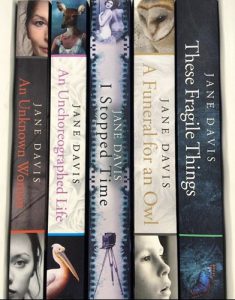 Incredibly generous and supportive. I have made some tremendous friends.
Incredibly generous and supportive. I have made some tremendous friends.
What do you do to market and publicise your book?
My marketing strategy is extending my reach with social media, nurturing my fan-base and getting out there to meet potential readers. My investment is generally one of time, not of money, but I do pay other people to tweet for me so that I don’t constantly have to say, ‘Buy my book, buy my book’. In March I experimented with a BookBub advert for my novel, A Funeral for an Owl. It resulted in 27,000 downloads. The sales of my other books increased, so far, I’ve had over 60 new reviews and I’ve also had hundreds of subscribers to my email list. I’ll definitely repeat the experience.
At a local level, I take a stall at a monthly craft fair, last week I took part in a book festival, I speak at Writers’ Groups… Anything to spread the word.
How do you split your time between marketing and writing?
Very badly, if you must know!
I read an interview with two extremely successful indie authors which said they both aimed for 80% writing time, 20% publicity time. I would say the reverse is true for me. They also both stick to a schedule of releasing a new book every two – four months! It is quite possible that this is what it takes to make a good living as an indie author, but I think you can only stick to a rigid schedule if you’re writing a series. It takes me four months to get to know my characters. It might take me a year to settle on the structure for a book.
I know I should ring-fence my writing time and safeguard it, but generally I do the next most important thing on my ‘to do’ list. Sometimes that involves setting aside a work in progress to earn money.
How did you create your author website, and would you advise every indie author to have one?
Absolutely. Presence on the Internet is a must. I am now on my second website. The decision to retire my old website was long overdue. Designed to promote my first novel, it had been stretched to its absolute limits. After interviewing several potential web designers, I chose The Curved House. I could see their love of books and I liked their work. The brief I gave them was to design a website to take me on the next stage of my journey. We introduced a raft of new features: downloadable excerpts, questions for book clubs and a media kit. The process forced me to think about brand, but it also reminded me how far I’d come. In just two years, I had released four novels!
You engage successfully with book clubs. What is your number one tip?
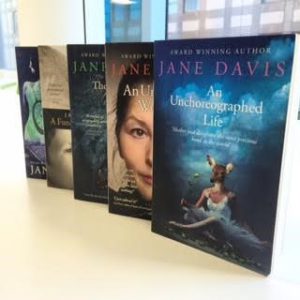 It’s vital to make your website a go-to place for book clubs. I have a dedicated book club page, and there is a downloadable list of suggested questions for each of my novels. I’ve called my author interview series, Virtual Book Club. Really, it’s become part of my brand.
It’s vital to make your website a go-to place for book clubs. I have a dedicated book club page, and there is a downloadable list of suggested questions for each of my novels. I’ve called my author interview series, Virtual Book Club. Really, it’s become part of my brand.
What is your top advice to indie authors?
That depends what stage of their journey they’re at. If they’re coming to me for advice, I’m going to assume they’re unpublished.
Publishing too soon is a cardinal sin. There should be a big red ‘publish’ button with dramatic sound effects, or a check list asking if you have had a structural edit, polished your material until you can’t stand the sight of it, if you have tested it on the public, if you have used proof-readers and copy-editors, if you are completely happy with your final proof. And then, ARE YOU SURE?
Incidentally, the best advice I heard was not to publish any material until you have three books polished and ready to go. The rationale behind this is that, if you don’t have those second and third books to sell, your sales will lose momentum, which means that your audience will move elsewhere.
What are your next steps?
I’ve just received feedback from my copy editor (glowing, I’m pleased to say), and I’m working through his comments, so I can start thinking about a release date for my new novel.
Click to follow Jane Davis on Facebook and Twitter and find her at her website!
